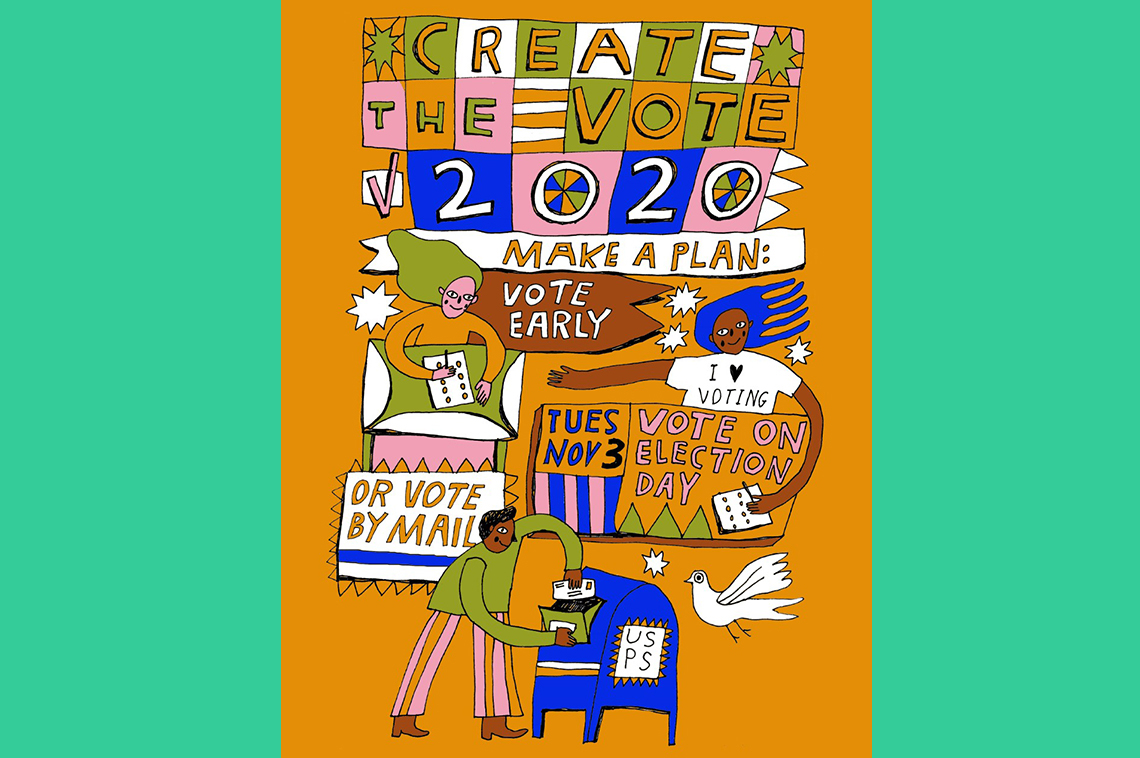
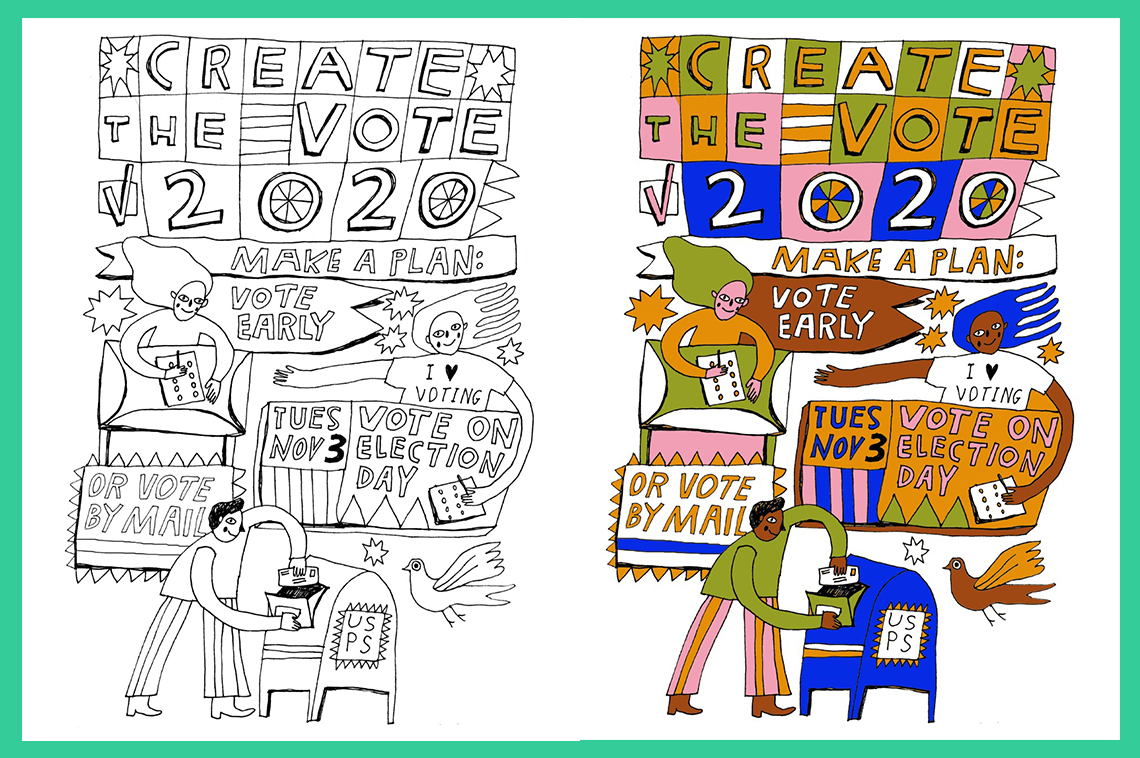
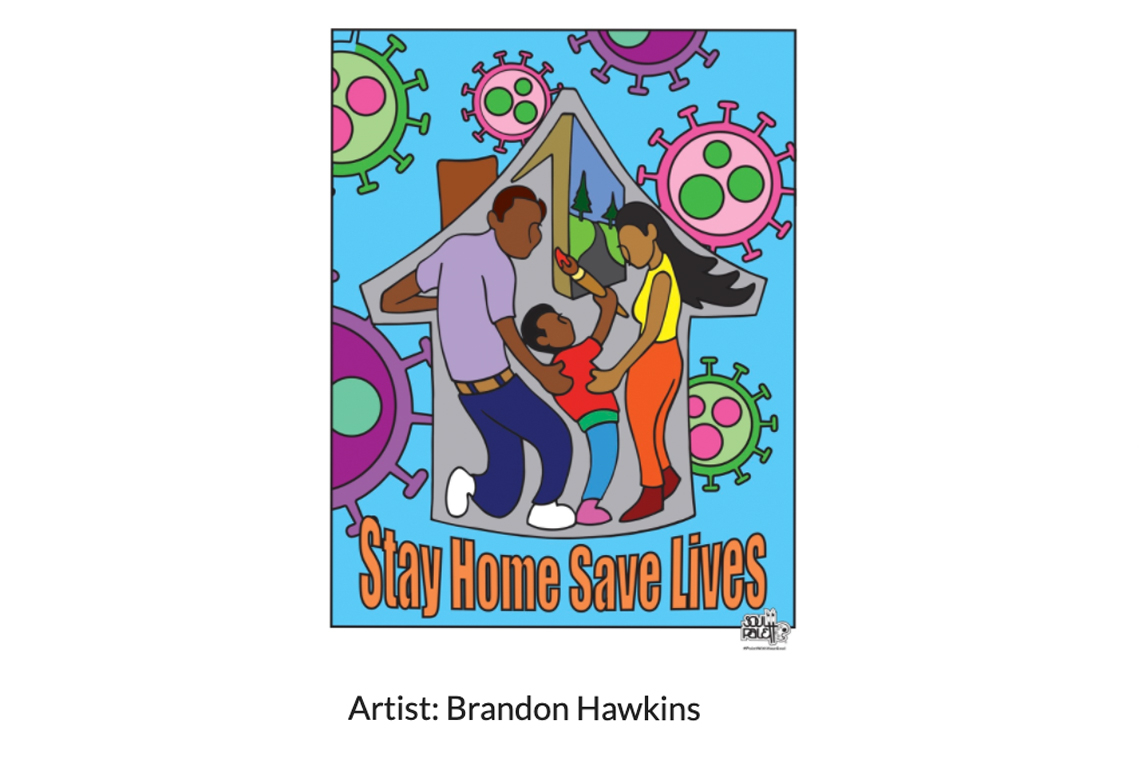
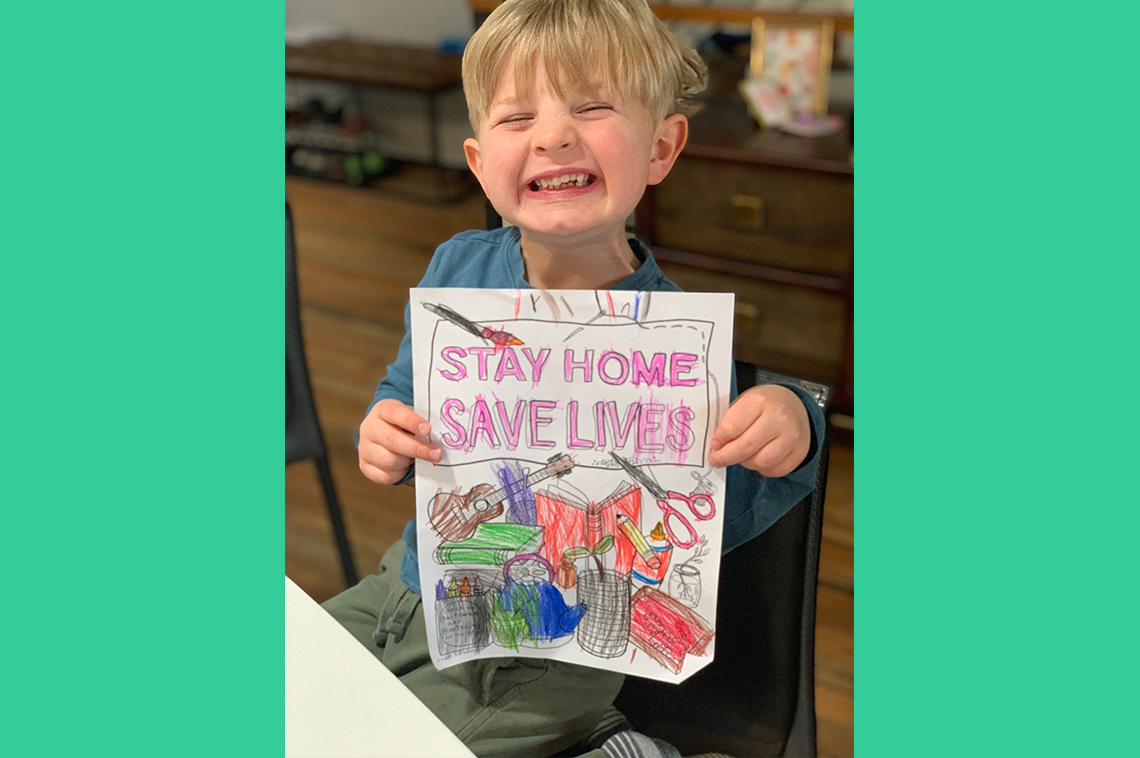
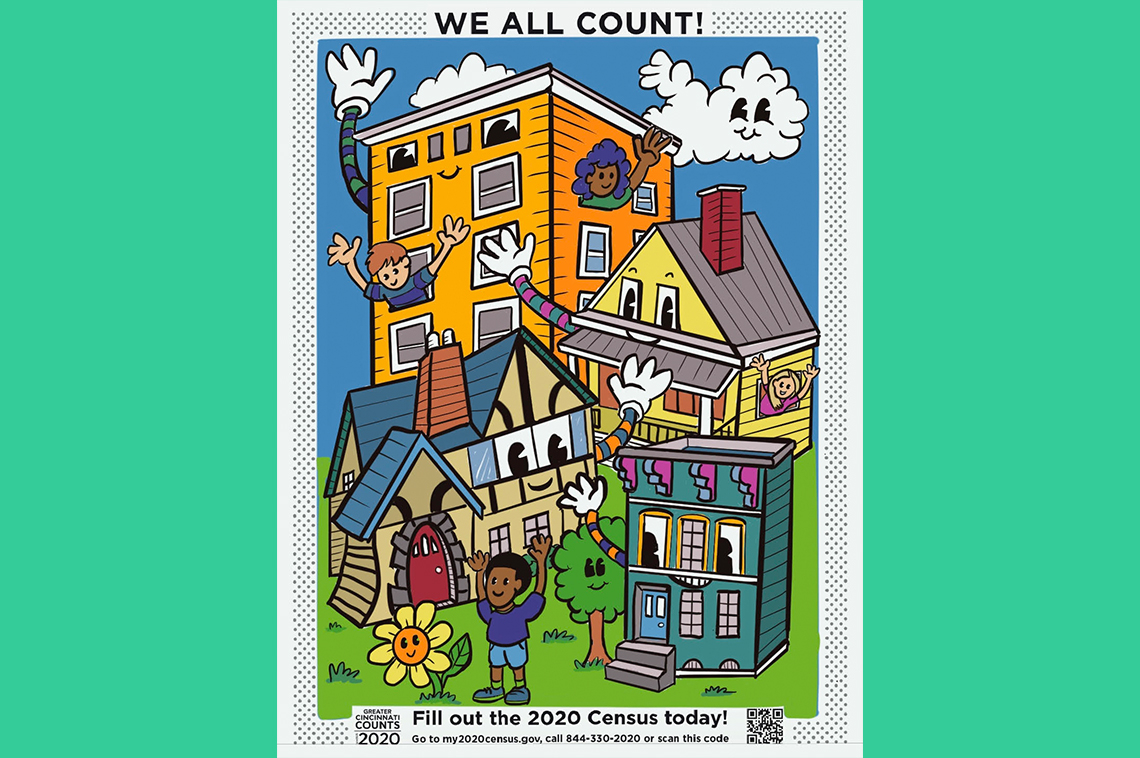
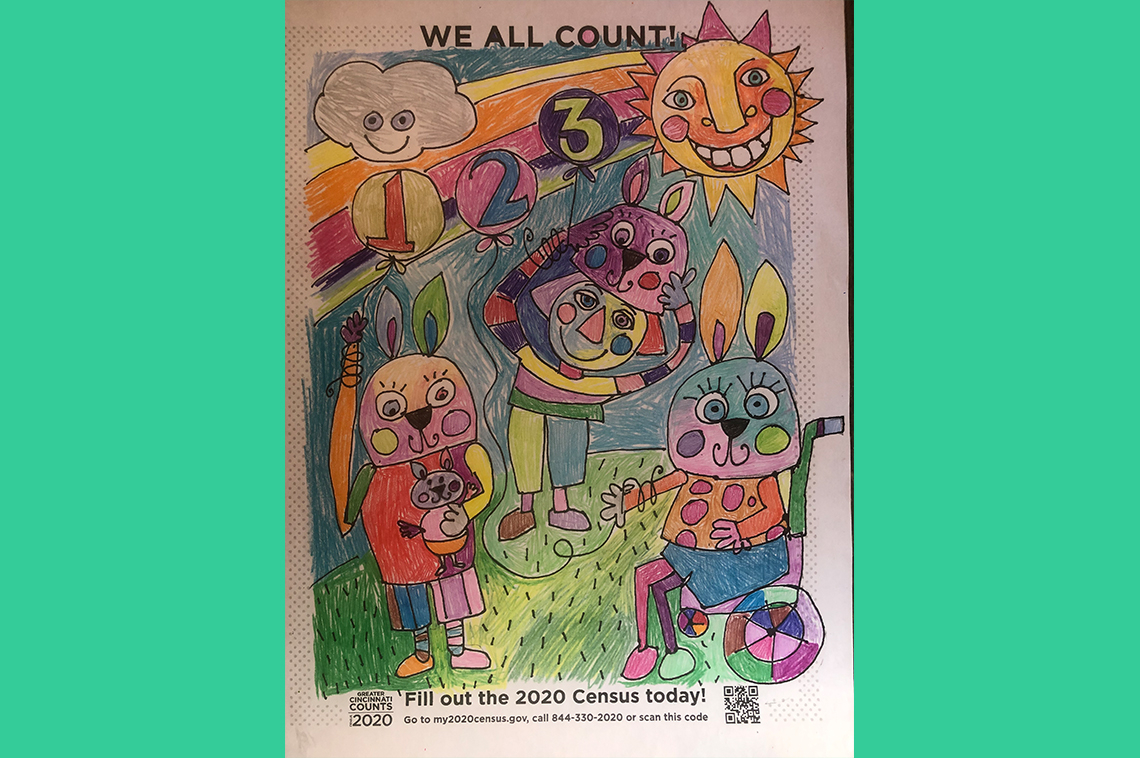
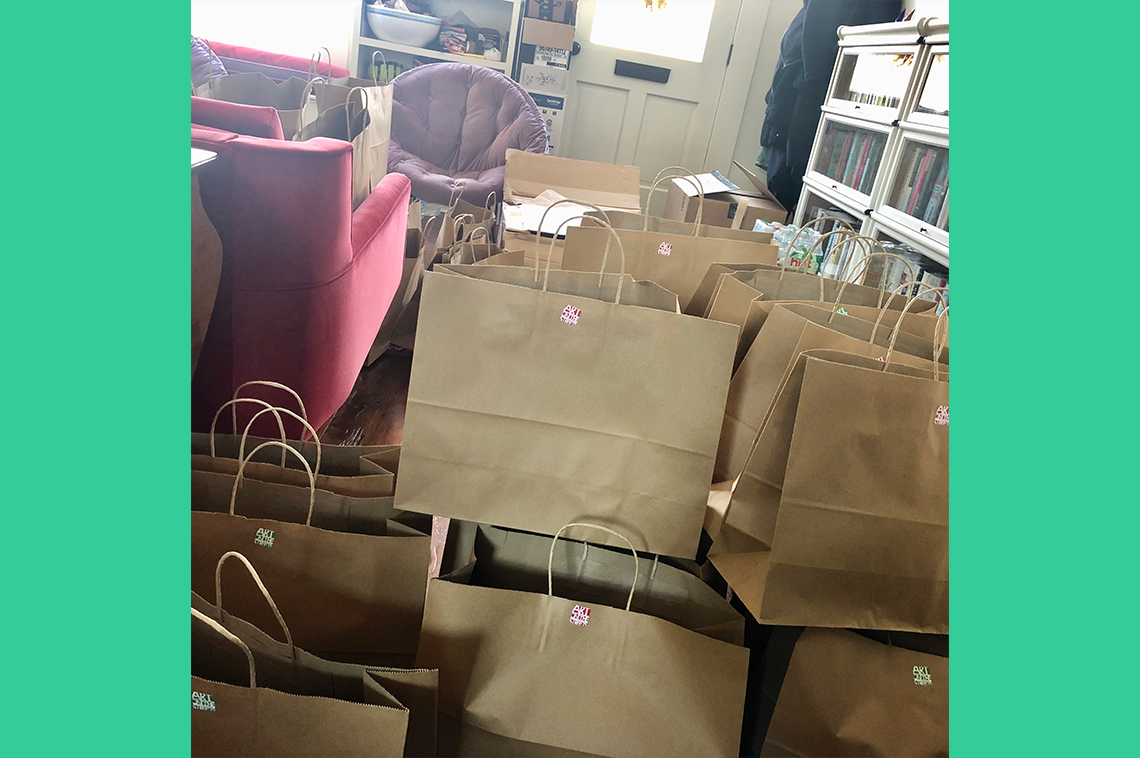
Interview with Margy Waller - Art on the Streets
How do communities share important health and civic messages during a pandemic? Creatively, with artists.
Stay Home Save Lives
Here in Cincinnati, our governor issued a stay-at-home order relatively early. If you went out for a walk, the streets were super quiet. But a few of us noticed that first Friday night, there were quite a lot of people gathering outside in our neighborhood. People were close to each other, at sidewalk parties there was music and dancing and people were sharing beers. Friends I talked with the next day were worried too and it made us wonder: how does the message get shared in a way that helps?
I put together an email to maybe 10 or so of my friends, a mix of civic leaders, artists and people from my own neighborhood. We had an initial ZOOM call the next day and the goal was to brainstorm, "Is there some other way to share the stay home message that might be more effective than directives from government officials?"
This group was amazing. They're all volunteers,all people I know, and then some of them invited others into the group. We pretty quickly landed on the idea of doing an artist-led campaign to encourage people to stay home and save lives. We got some public health people involved and within a week, we had written a creative brief on what we were looking for and how we would do it.
Our theory was this: Rather than having a public official, the governor, the mayor, somebody saying, "You should stay home," maybe it would be more effective if people heard from their relatives, their neighbors, their own network, that this is important.
That's what we asked artists to come up with. Some kind of a campaign that could be executed within two weeks. A participatory creative campaign to “Stay Home Save Lives” that people could do from inside their homes, for which they would not need any materials other than what we could provide them digitally. We invited four artists, and all four agreed right away to do it. ArtsWave, an arts funder in the community, gave us a sponsorship so we could offer all the artists up to $1000 each for their work.
Two of the artists decided to create coloring pages. The thinking was that if we provide the pages, then kids will color them. They'll share the pages with the adults in their household. If we suggest to them that they post the art in the windows of their home, then they're communicating the message out to the neighborhood as well.
The local schools really loved this idea and they decided to distribute the coloring pages through the meal distribution programs as well. We distributed hundreds of coloring kits with the pages, crayons, and removable glue dots (for window posting). We took them to three schools, multiple community organizations, and we offered them for digital download.
There were two other campaigns in the initial Stay Home, Stay Lives campaign. One was a series of interviews, video conversations between people who had different viewpoints on the importance of staying home. Tthe artists designed it particularly because they wanted to see if there was a way to reach people who were resistant. Not just that they weren't hearing the message, they were actively resistant. The fourth campaign was created by two artists who work together. They did a campaign on Instagram, which was a participatory prompt campaign. Each week the artists offered, a new prompt to participate in from home. So they werereaching a very different demographic.
Stay Home Save Lives coloring pages downloads
We All Count: Census Campaign Coloring Pages
In July 2020, we collaborated with ArtsWave, The Well, Wave Pool, the City of Cincinnati, and the Over-the-Rhine Community Council to create coloring pages to spread the word about completing the census. We paid two artists, John Lanzador and Pam Kravetz, to create the fun and quirky pages. Then we added information on each page about how to find the census survey with a QR Code, a website, and a phone number. Our kits included the two coloring pages, crayons, and glue dots to share the message with family and neighbors by posting pages in windows. Working with local organizations like summer camps, schools, housing providers, recreation locations, and more, we distributed over 2000 coloring pages in a few weeks. The local elementary school also distributed them as part of a backpack and device distribution. The census coloring pages have been a huge success, and last week the campaign was featured in the multi-state, regional publication of the Census Bureau.
Download census coloring pages here.
Sharing the love
What I really loved about the work in this year was the way community people came together as volunteers to create the concept and plan the campaigns. We shared the goals with the artists and let the artists do whatever they thought would work to share the messages within their networks.
Census staff even called to say that people throughout the region are asking for permission to use the coloring pages! The census coloring campaign has gone well beyond Cincinnati at this point. Anybody, anywhere can use the pages that we created, but it might be even more fun to invite local artists to create their own coloring pages on local themes and issues.
We put together a creative brief and the call to artists, which can be freely repurposed in other places, if people don't have something like that already.
Now, this is important. One of the artists told me just how much she appreciated being paid adequately for the work. There's lots of people asking artists to do things for free, and artists even... because they want to contribute in this time especially, responding to that. So to get paid a decent amount was something she deeply appreciated.
One of the coolest things in all this has been the multiple partnerships. The city administration made copies of the coloring pages for the coloring kits. The schools facilitated distribution to reach as many people as possible. The neighborhood-based, resident-led community council, supported the coloring kits with a grant. There's obviously a reason for all of these groups to care about health and civic issues. And they appreciate our safe and creative approach.
What’s next in the coloring chronicles?
Now, our partners are interested in coloring pages for a ‘How and Where to Vote’ campaign. It’s complicated to vote during COVID. People need to know how to register, request a mail-in ballot or where to vote early, and how to find the polling places. To get the word out, we’ll put all that information onto the coloring pages—with a QR code and website.
We are currently looking for donors for our voting information coloring kits. We’ll get these produced quickly—we already have distribution partners and really exciting artists lined up.
Contribute to make voting easier
https://ioby.org/project/creating-vote
For all of us who have been involved in these civic health campaigns, it feels like a rewarding contribution at a time when there's so little that we can control.





